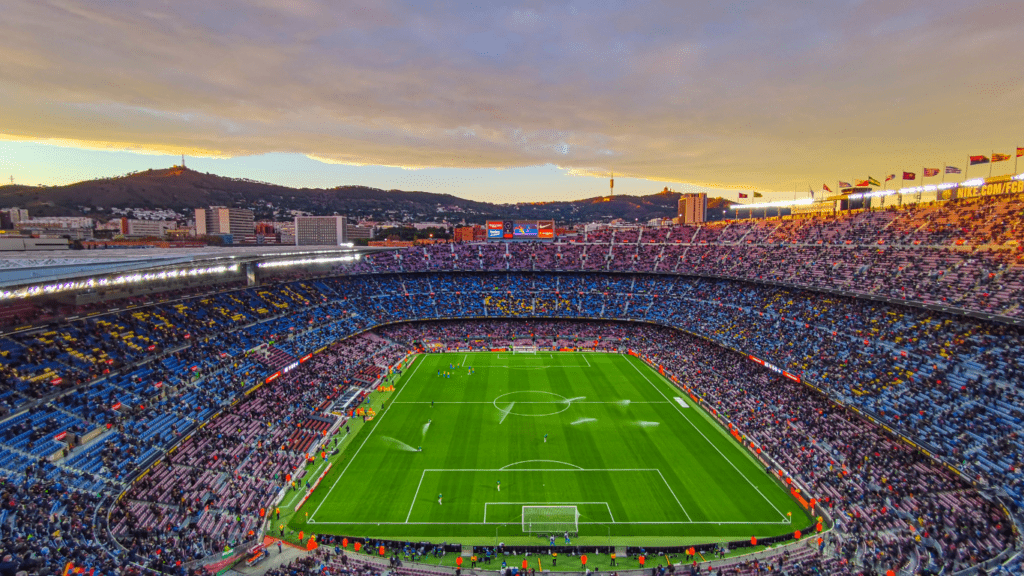The Significance of Sports Venues in Culture
Sports venues hold profound cultural weight. These spaces represent more than just locations for physical contests. They act as communal gathering points, bridging diverse groups. Yankee Stadium, for example, carries the legacy of countless World Series victories.
Historical significance creates a shared identity. Venues like the Rose Bowl Stadium capture pivotal moments in sports history. By visiting these places, fans connect to past eras and legendary figures. This connection fosters a sense of belonging and continuity.
Architectural marvels showcase cultural values. Iconic venues often reflect the design trends and architectural ideals of their time. The Beijing National Stadium, known as the “Bird’s Nest,” symbolizes China’s modernity and artistic aspiration during the 2008 Olympics.
Events beyond sports enrich these venues. Many iconic stadiums host concerts, political rallies, and large-scale community events. Wembley Stadium in London, for instance, has seen historic music performances alongside legendary football matches, amplifying its cultural impact.
Local economies thrive around popular venues. Businesses benefit from the influx of visitors, creating jobs and boosting economic activity. The presence of Wrigley Field in Chicago’s North Side has revived and sustained a vibrant neighborhood scene.
Global recognition elevates the status of these venues. Hosting major events like the Olympics or the World Cup positions cities as international hubs. The Maracanã Stadium in Rio de Janeiro remains an emblem of Brazil’s lively football culture and global appeal.
Traditions and rituals cement their relevance. Fans develop rituals that revolve around their visits to these venues, contributing to a unique cultural fabric. The pre-game tailgating tradition at the Lambeau Field adds a communal layer to the sporting experience.
The cultural significance of sports venues extends far beyond the games played within them. They represent history, community, architecture, and economic vitality, enriching both local and global cultures in multifaceted ways.
Historical Landmarks
Certain sports venues stand out as historical landmarks, serving as symbols of their eras and hosts for countless unforgettable events.
The Colosseum
The Colosseum in Rome, constructed in 80 AD, represents ancient architectural mastery and the grandeur of Roman engineering. It hosted gladiatorial contests, public spectacles, and even mock sea battles.
This amphitheater could hold up to 80,000 spectators, illustrating Rome’s capacity for large-scale entertainment and social gatherings. Its enduring legacy survives through its structural remains and the architectural techniques that influenced stadium design in subsequent centuries.
Madison Square Garden
Madison Square Garden, located in New York City, is renowned as the “World’s Most Famous Arena” and for good reason. Opened in 1968, it has been a versatile venue for sports, concerts, and political events.
It’s the home of the NBA’s New York Knicks and the NHL’s New York Rangers. The arena’s history includes hosting iconic fights like the “Fight of the Century” between Muhammad Ali and Joe Frazier in 1971. Its central location in Manhattan makes it an accessible and pivotal part of New York’s cultural and sports landscape.
Modern Marvels
Modern sports venues showcase cutting-edge design and advanced technology. Bird’s Nest Stadium and SoFi Stadium stand out for their unique features and cultural impact.
Bird’s Nest Stadium
Bird’s Nest Stadium, officially known as Beijing National Stadium, is an architectural wonder. Designed by Herzog & de Meuron for the 2008 Beijing Olympics, it is an iconic symbol of modern China.
The stadium’s steel lattice structure resembles a bird’s nest, symbolizing cradle and nurturing. With a seating capacity of 80,000, it hosts international sports events and concerts.
The venue’s sustainable design includes a rainwater collection system and a translucent roof for natural light. It embodies a blend of functionality and art, making it an engineering feat.
SoFi Stadium

SoFi Stadium, located in Inglewood, California, opened in 2020. This state-of-the-art venue, designed by HKS Architects, serves as home to the Los Angeles Rams and Chargers.
The stadium can seat up to 100,240 spectators and features a transparent ETFE roof that allows natural light yet protects from the elements.
It has the largest video board in sports, the Oculus, which is a dual-sided display hanging over the field. The complex also includes development zones for retail and office spaces, reflecting the integration of sports and urban living.
SoFi Stadium exemplifies futuristic design and multipurpose functionality.
These modern marvels are not just stadiums but cultural icons that push the boundaries of architecture and event hosting.
Unique Features and Architectural Innovations
Modern sports venues boast groundbreaking features and architectural innovations enhancing fan experience and environmental sustainability.
Retractable Roofs
Retractable roofs revolutionize sports venues, offering flexibility and comfort. These structures allow events to proceed regardless of weather, optimizing utility.
Stadiums like AT&T Stadium in Arlington and Rogers Centre in Toronto feature state-of-the-art retractable roofs. AT&T Stadium’s roof spans 104 million cubic feet, making it one of the largest of its kind. Rogers Centre, opened in 1989, was the first stadium with a fully retractable roof, and it transformed stadium design globally.
Sustainability Efforts
Sustainability efforts in sports venues reduce environmental impact and operational costs. Levi’s Stadium in Santa Clara is a prime example, featuring a green roof and solar panels.
It earned Leadership in Energy and Environmental Design (LEED) Gold certification. Mercedes-Benz Stadium in Atlanta also showcases sustainable design, with rainwater collection systems and energy-efficient lighting. These eco-friendly initiatives reflect a growing trend toward environmental consciousness in modern architectural designs.
The Fan Experience
Modern sports venues aim to enhance the fan experience through various features and services. Their goal is to provide every attendee with a memorable visit that extends beyond the game itself.
Seating and Visibility
- Seating configurations play a crucial role in the fan experience.
- In venues like AT&T Stadium, each seat is designed to offer unobstructed views, ensuring fans never miss crucial moments.
- Stadiums often feature tiered seating and strategically placed screens to enhance visibility.
- In modern venues, such as SoFi Stadium, cutting-edge digital screens and sound systems ensure optimal viewing and auditory experiences from any seat.
- Architects prioritize ergonomic seating to provide comfort during long events.
Amenities and Services
- Venues increasingly focus on providing amenities to create a comprehensive experience.
- High-end stadiums like Levi’s Stadium offer a range of services including gourmet food options, VIP lounges, and interactive fan zones.
- Modern venues incorporate fast Wi-Fi, enabling fans to share their experiences in real time.
- In Mercedes-Benz Stadium, eco-friendly designs feature water stations and recycling programs to promote sustainability.
- Comprehensive amenities and services are integral to making each visit comfortable and enjoyable.



